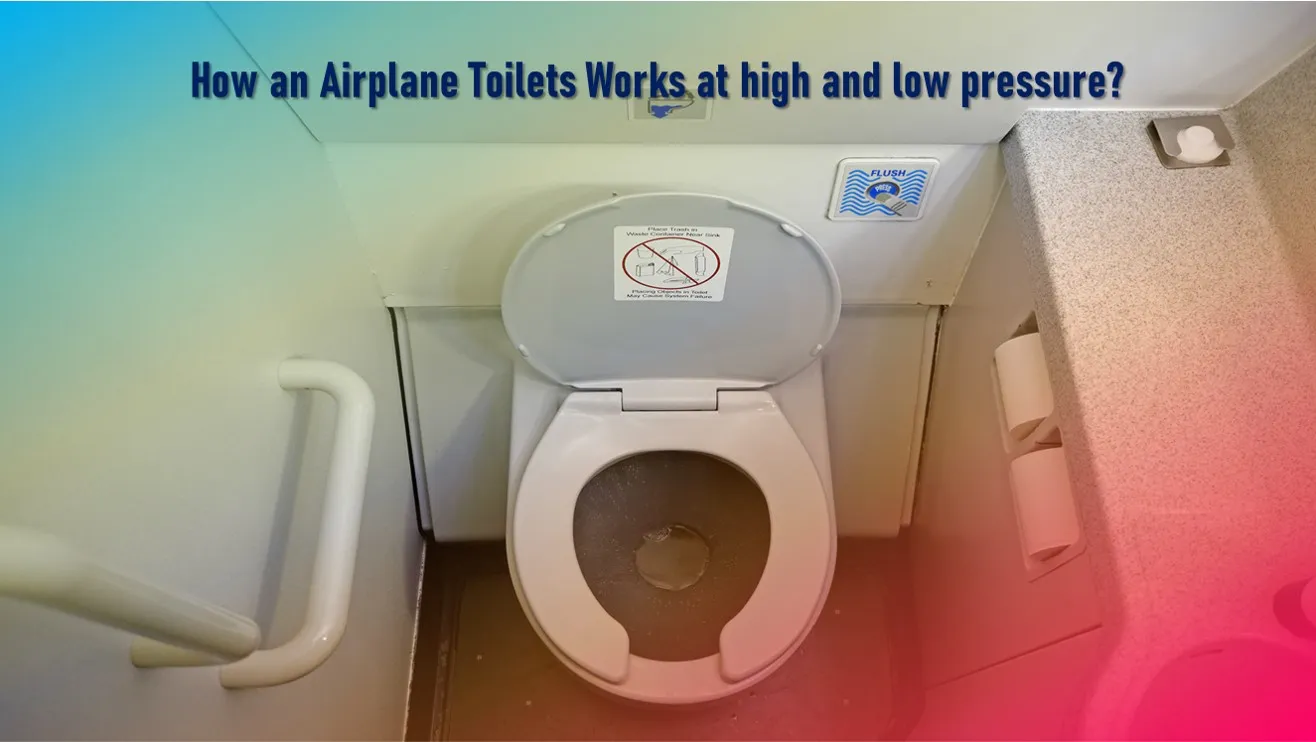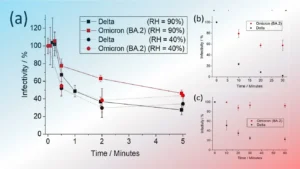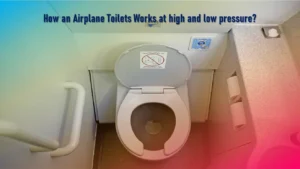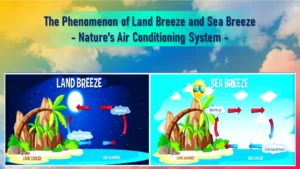This article based on “How an Airplane Toilets Works at high and low pressure?”. Here you will find all the questions related to airplane toilets i.e. how high pressure and low pressure are connected to Airplane toilets, and how Airplane Toilets Works at low pressure (Airplane flying at 40000 feet) and high pressure (Airplane after land or standing inside the airport), why airplane toilets have tissue paper instead of water.
- High pressure: With decrease in airplane height (low altitudes) atmospheric pressure increases and creates high pressure (Airplane after land or standing inside the airport)
- Low Pressure: With increase in airplane height (high altitudes) atmospheric pressure decreases and creates low pressure (Airplane flying at 40000 feet).
At higher altitudes, Outside the airplane is low pressure but inside the cabin maintain high pressure which is same as our grounds environment for the safety of passengers and crew.
How high and low pressure are connected to Airplane toilets?
Basically normal toilet contain water tank where as airplane toilet contains tissue paper. Because water has more weight than tissue paper and to maintain airplane weight capacity. So in airplane toilet works based on air flow from high pressure to low pressure.
How an Airplane Toilets Works?
Inside the cabin, aircraft are pressurized to maintain a comfortable environment for passengers and crew, especially at high altitudes where the outside air pressure is significantly lower. This involves regulating the air pressure inside the cabin to mimic conditions found at lower altitudes.
Airplane toilets have tissue paper for cleaning, a vacuum system for cleaning used tissue paper and human waste and wastages container to collect the all wastages.
How Airplane Toilets Works at low pressure (Airplane flying at 40000 feet)?
Familiarize yourself with the instructions posted inside the airplane toilet regarding flushing, locking the door, and disposing of waste. These instructions are typically straightforward and may vary slightly depending on the aircraft.
Before flushing make sure you put all the wastages into the toilet pan, close the toilet lid. This helps prevent any splashing or spraying of water due to the reduced air pressure at high altitudes.
Some airplane toilets have manual flush buttons or levers, while others may have automatic sensors. Ensure that the toilet is properly flushed to maintain cleanliness and hygiene. When you press the flush buttons the air inside the toilet start flow from high pressure (inside the plane) to low pressure (outside the plane). The wastages collected to the waste container and pleasant air goes outside, because of that toilet get fresh air always.
Follow the guidelines provided for disposing of waste, whether it’s toilet paper, feminine hygiene products, or other items. Most airplane toilets have waste bins for these purposes. Avoid flushing anything other than toilet paper and human waste to prevent clogging.
After using the toilet, wash your hands thoroughly with soap and water if possible. If soap and water are not available, use hand sanitizer to disinfect your hands.
Note: Remember that airplane toilets are shared facilities, so be considerate of other passengers. Avoid spending excessive time in the restroom, and leave it clean and tidy for the next person to use.
How Airplane Toilets Works at high pressure (Airplane after land or standing inside the airport)
When the airplane standing inside the airport at that time inside and outside pressure are equal. So the plane has a vacuum machine for cleaning toilet and air flow outside. And the all the toilet using process are same as at high altitudes.
Also read:
The Phenomenon of Land Breeze and Sea Breeze – Nature’s Air Conditioning System











